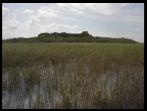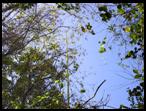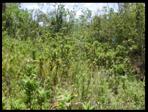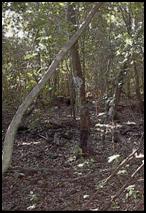
|
Hammocks & Tree Islands |







|
Tropical hardwood hammocks are generally found on rocky substrates, within the Florida Keys, southern Everglades and Big Cypress National Preserve. Many of the most characteristic trees are broad-leaved evergreen species of West Indian origin. Hardwood hammocks can also be found embedded within a wide variety of ecosystems: on the upstream, elevated side of tree islands, dispersed through the coastal wetlands (mangroves), and dotted throughout pine forests.
|
|
|
|
The term “tree island” is a blanket term for any area where clumps of trees occur in areas of smaller stature vegetation (i.e. sawgrass marshes). In the Shark River Slough area of the Everglades, the larger tree islands generally have a recurring pattern of orientation and overall structure. Our research, and the following descriptions, are primarily concerned with tree islands of this nature. These particular tree islands tend to be a shape similar to an elongated teardrop, oriented with the long axis parallel to the direction of freshwater sheetflow. The bulbous end of the teardrop is at the “head” of the tree island, meeting the waterflow. |
|
The head of the tree island is generally a tropical hardwood hammock that rarely becomes inundated. Shark Slough tree species include gumbolimbo (Bursera simarumba), sugarberry (Celtis laevigata), mastic (Mastichodendron foetidissimum), pigeon plum (Coccoloba diversifolia), white stopper (Eugenia axillaris), paradise tree (Simarouba glauca), plus many other species are possible as well. Near the edge of the hardwood hammock one may find cocoplum (Chrysobalanus icaco). The hardwood hammock grades into a bayhead forest as one moves in the direction of waterflow and soil elevation decreases.
The bayheads are named as such due to their dominance by canopy species such as swamp bay (Magnolia virginiana), red bay (Persea borbonia), but also includes dahoon holly (Ilex cassine), pond apple (Annona glabra), wax myrtle (Myrica cerifera), willow (Salix caroliniana), and cocoplum (Chrysobalanus icaco). Underneath this canopy may be a dense understory including many herbs, sedges, vines and ferns, such as leather fern (Achrostichum danaeifolium). This forest type experiences periodic dry-downs during the dry season (winter) and remains inundated during much of the wet season (summer).
The bayhead itself generally becomes less dense and of shorter stature as one moves towards the “tail” of the tree island - this tail is generally referred to as a Bayhead Swamp. Here soil elevations decrease, resulting in elevated water levels, with little to no dry-down occurring at any point in the dry season. Many of the same canopy species occur here as within the Bayhead, but the shrub layer becomes increasingly dominated by buttonbush (Cephalanthus occidentalis) and leather fern as the tail dissipates. Also, as the tail areas become less dense, gramminoid species, such as sawgrass (Cladium jamaicense), become more common. |
|
